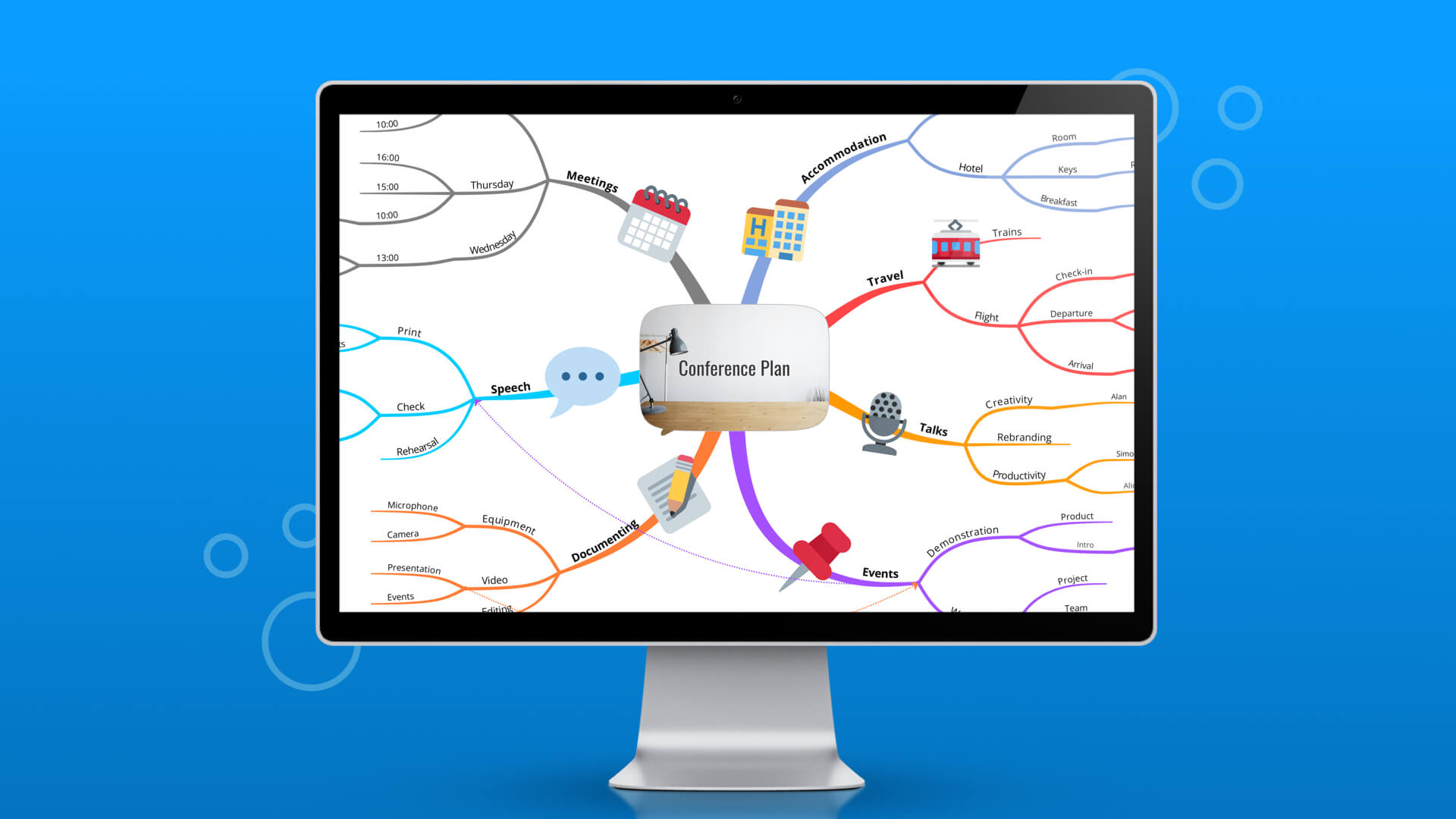Even if you’re not familiar with the term ‘mind map’, chances are you’ve used this visual thinking tool at some point in your life. Sometimes called a spider diagram or a brainstorm, mind mapping refers to a technique used for generating ideas, analysing concepts, absorbing knowledge and finding solutions (and much more in between).
In the most basic of terms, a mind map begins with a central idea which can be drawn or inserted into the middle of the page. From this central idea, other related ideas are added via branches from which more branches and ideas can be added ad infinitum.
The beauty of the mind map is not only its power to boost our natural cognitive abilities, it also provides a brilliant way of capturing information. One which can be used by anyone, anywhere. In this day and age, digital mind mapping has transformed the traditional mind map into something which can be used even more fluidly in a professional setting – from seeking new ideas to presenting those ideas in a business setting.
But, just as word processing hasn’t rendered the notebook useless, mind mapping by hand can still be an incredibly useful and transportable tool in everyday life. So, now we’ve covered the basics of what a mind map is, it’s time to get more in depth about how the mind map can be used for a number of creative purposes. Keep reading to find out more.
Mind mapping to generate ideas
Generating ideas is perhaps the most common use of the mind map. And yet, you might wonder why mind mapping is so effective in this area in particular, and it’s actually because mind mapping mirrors the natural human thinking process. While it might feel like ideas pop out of nowhere into your head, they’re actually the product of generative thinking – this is when you get some momentum behind your thoughts, and start fusing old ideas together in order to come up with new ones.
Like frogs jumping between lily pads, the branches of a mind map enable the user to move seamlessly from one thought to another, capturing every new idea with a single word or phrase. In fact, if you look at the end product of a finished mind map it looks rather a lot like the neurons found in our brains. What further proof do you need that a mind map is the perfect way to work with, not against your thinking.
Mind mapping to retain information
Whether it’s revising for an exam, researching a new project, or simply getting to know a new subject area, learning new information is only ever half the battle. The real difficulty comes in when you have to retain and recall the knowledge at a later date. If you’ve ever tried reading a page over and over, or copying down dull notes, you’ll know how ineffective it can be in really getting information to stick. No matter how much you like books, relying on wholly text-based methods is not going to be engaging enough to really help the facts sink into your memory.
Alternatively, a mind map helps to improve information retention not only by working with the natural flow of your brain, but also by using a visual and spatial layout that creates more powerful associations in the brain. With information separated out into more digestible chunks, and the natural connections and relationships between these elements clear to see at a glance, remembering becomes a much more natural process. No wonder mind maps are used by education institutions across the world to aid student learning.
Mind mapping to solve problems
Problem solving is often a dreaded task, in both the workplace and daily life. When it comes to unknotting tricky situations or finding solutions to big challenges, facing a blank piece of paper trying to come up with solutions can be a real head scratcher. However, mind mapping perfectly facilitates problem solving and is yet another reason it’s such a popular technique across the globe.
In addition to all the positive attributes already mentioned in relation to mind mapping – such as the mirroring of natural brain processes, and easy digestibility of information displayed in a visual format – mind mapping can also be used adjacent with other techniques to specifically help with problem solving. For example, reverse brainstorming is a method where trying to think of ways to exacerbate the problem can actually help you shift your thinking in order to see blindspots you might have missed otherwise. Plus, the format of the mind map is a great way of getting a bird’s eye view of the components of an overall problem, while still providing the power to break down the nitty-gritty of the individual sections.
To conclude: why mind mapping is a must for learning and creativity
Tools are things we use to help make processes which might otherwise be arduous or time consuming faster and more efficient. Steve Jobs once described the computer as a “bicycle for the mind”, and similarly, mind mapping is much more than a visual diagram or form of note taking – it’s an indispensable tool which can be used for elevated thinking. With the welcome addition of online mind mapping, this tool has been taken to a whole new level. It’s flexible, innovative and can help with almost any project whether it’s a mission to redecorate your house or pitch for millions of pounds of investment. So, word to a wise, now that you know what a mind map is, make sure you put it to good use in your day-to-day life.
[cta_social]
[eoc_general title=”The all-in-one remote work toolkit” description=”Ayoa is an all-in-one platform that allows teams to collaborate seamlessly while working from home. Integrations with Dropbox and Google Drive allow you to stay productive and avoid switching between apps.
” Button=”Try it for free” link=”/signup/”]


